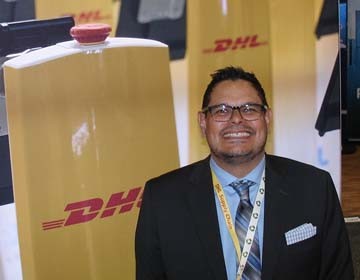Adrian Kumar, DHL Supply Chain’s global head of operations science and analytics, told AJOT that his company anticipates having a total of more than 1,000 robots in place at 11 distribution sites in North America and Europe by the end of 2020. That’s quite an impressive jump since DHL put its first such robotic unit in place four years ago at a medical device company facility in Memphis, Tennessee.
“The retail sector is very bullish on this because they see the potential,” said Kumar, whose company is title sponsor for LINK2020: The Retail Supply Chain Conference at the Gaylord Texan Resort & Convention Center in Grapevine, Texas.
The DHL robots, made by Wilmington, Massachusetts-based Locus Robotics Corp., are now in use at several fashion company facilities, including ones specializing in children’s clothing, outdoor wear and sportswear, as well as distribution centers for specialty wines and liquors, according to Kumar.
“Fashion works well,” he said. “It’s light.”

DHL recently began offering robotic pickers on short-term leases – a development particularly appealing to companies gearing up for peak shipping periods.
“It’s really scalable and flexible,” Kumar said. “It doesn’t require investment in infrastructure changes because it works within existing warehouse infrastructure.”
Not only are DHL Supply Chain customers seeing an average increase in productivity of 70 percent compared with use of traditional manual pick carts, he said, but the typical time for training humans overseeing the units has been reduced to three weeks from 12 weeks.
A warehouse robot can work 16 or more hours a day, but for DHL customers not in position to derive such full benefits of robotics, the company offers other customized solutions, including smart algorithms and augmented reality glasses, Kumar pointed out.
“They are,” he said, “all part of our arsenal.”
Online reporting from the RILA conference continues this week, with comprehensive coverage, including reception photos, slated to appear in print in the March 9 edition of AJOT.

